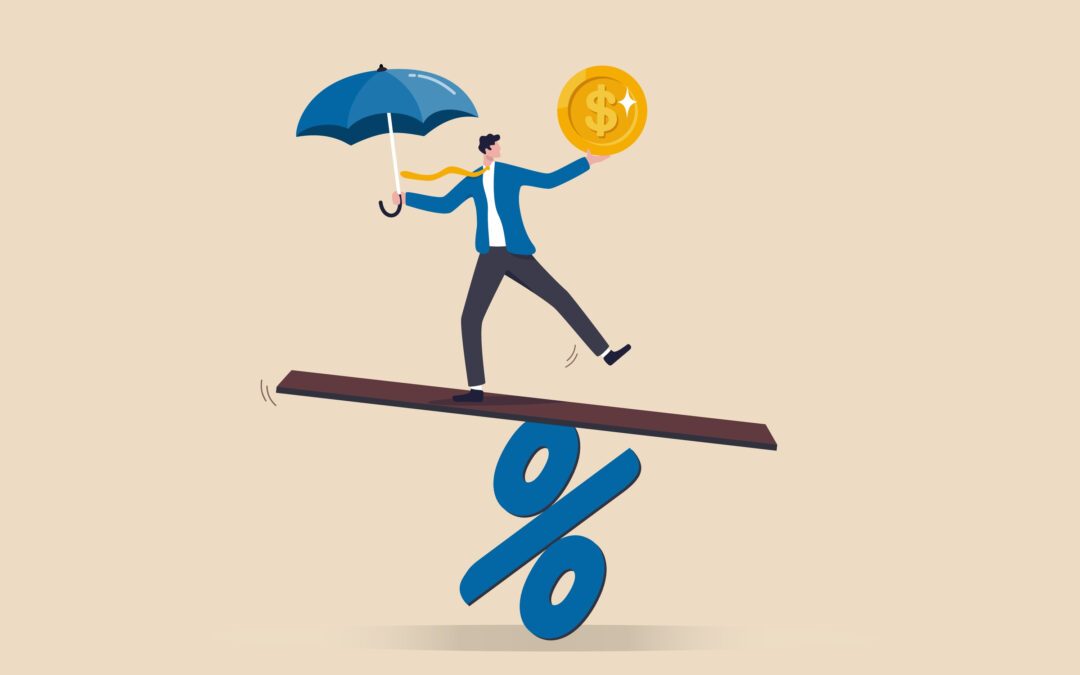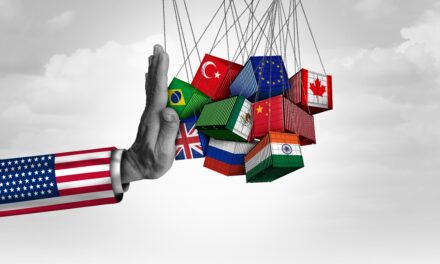Right now, we’re in the middle of a massive transformation in both data and perception…
Wall Street and Washington are gradually coming around to recognize the slowdown I’ve now spent months ringing alarm bells about, and the data doesn’t look good.
Today I’d like to dive into a moment-by-moment breakdown of what you can expect over the next week, as a series of critical new releases promise major volatility for some of the market’s favorite stocks.
Let’s dive in:
Video transcript:
Hello, fellow Moneyball economists. I’m Andrew Zatlin and this is Moneyball Economics…
This week promises to be a very interesting one. It seems like every day we’re going to get a net new economic data point, and depending on the data point du jour, the markets are either going to be very happy or very sad.
So if you’re the kind of investor who likes to play volatility, this could be your week. Every day we might have an opportunity for you to just put an option straddle out there and just make money off the volatility.
For example, we’re going to start the week with inflation, consumer inflation, and then later in the week on Thursday, we’re going to get producer inflation, what the factories are encountering, and then to round it out on Friday, we’re going to get retail spending. Now, each of these data points speaks to a particular point of pain for the markets.
Right now, the markets are expecting a slowing economy, not a collapsing economy, but sort of a soft landing, a softening of the economy that would benefit from some rate cuts, Chairman Powell. So they want to see some rate cuts. They don’t want to see a crisis in the economy. They just want to see a slight drifting down, not a lurch down. Any data point that helps build that case is going to be appreciated.
So for example, let’s talk retail… We’ll work our way backwards to the start of the week. Retail comes out on Friday, and that is the best proxy we have for consumer spending. Consumer spending, well, that’s the bedrock of the US economy.
So anything that happens there is generally speaking, a big broad brush stroke indicator of what’s going on overall in the economy. So the hope is that the consumer continues to spend at a rate that is indicative of whatever dollar they’re coming in from their paychecks they’re spending.
So in other words, the consumer’s not moving from a place of fear.
In fact, if it goes a little bit hot, that’s not a bad thing either because that indicates the consumer might be pulling in some debt as well. Hey, that’s a good thing. Again, the consumer moving into a positive sentiment zone. We have on Thursday the producer inflation, and that to me is where the concern should be. That’s where tariff inflation’s going to show up.
American factories rely on a lot of imports, raw materials, assembled goods and so forth. And if we apply these tariffs, well that’s inflationary. They’re going to see that inflation. The question is are they going to pass it along or are they going to eat it? So this is the core place we would look to see if tariffs are really affecting things. Now, quite frankly, today’s tariff story is very different from the March and April story.
What’s changed is that in the beginning, Trump was throwing out stupid numbers, 30% tariffs, 50% tariffs. In fact, we’ve landed at somewhere around 15%, and even that has some loopholes and stuff. For example, with China where a lot of factories source most of their product, guess what? Even that’s been kicked downstream now. Now it’s another 90 days.
So the real impact of tariffs has been diluted and not just down to 15%, but let’s face it, a lot of producers offshore absorbing some of that higher cost and a lot of producers here absorbing that cost.
And so a lot of that inflation impulse that’s there isn’t really being passed along to consumers, and that’s where we are today with the consumer inflation coming out. Let’s face it, if consumers are encountering inflation that’s just eating up their paychecks, they’re not happy, they’re going to start retrenching.
And so inflation moderating is important. It tells us that the consumer has more real wages to spend. It’s also important because again, it’s one of the two charters for the Fed. They’ve got to keep inflation in check and they’ve got to keep payrolls up.
Well, we know from the recent data, payrolls are severely down, and so if inflation softens that supports the idea that it’s time for the Fed to cut rates, okay, fast forward, where are we? Well, there was relief today.
We got kind of a relief rally in the markets. Why? Because the inflation came out and lo and behold, it kind of moderate, just a little bit, little bit, barely noticeable, but directionally, it supports the idea that we’re not encountering inflation, that inflation itself might be coming down and even better.
Tariffs are not a thing that’s at the headline number, but unfortunately when you dig in, inflation is high and rising, so the Fed is not off the hook. The Fed can’t come back in September and say, “wow, inflation down, wow, job’s down. It’s time to unleash the hounds!” Boom, inflation interest rate cuts. See, the problem is when you dig into the numbers, we’ve got the headline number, the total sausage, and then we’ve got the core. What’s really in there? The difference is about 30% of the CPI number is made up of food and energy, and those are pretty volatile. Those move around a lot. And the reason we had inflation coming down, well, it’s because gas prices came down and that’s it.
We would not have seen this big offsetting move to inflation without that. And so most people ignore food, they ignore energy, and they focus on what’s called the core. That’s pretty much the other 70 odd percent of the components. Now, I’m not here to talk about the sanctity of CPI and how it’s put together.
I believe all government data is put together badly. It’s not me against the government, it’s just it’s old. A lot of these data points were put together 50, 60 years ago before the internet existed, before the digital economy existed, and they’re not standing the test of time.
For example, let’s talk healthcare. Well, you and I spend a lot on healthcare, no doubt. I don’t know how much it is as a share of your income, but if you are the government, they say that the share of your spend, again, if you take the total pie of CPI, healthcare represents less than 1% of everything that the consumer is spending, and we know that’s ridiculous. I spend more than 1% on healthcare every year, but that’s the way it is, the way they’ve divided up the pie, it no longer represents actual spending of a household, but we take what we got and we use it the way we can.
The problem is right now, we can’t look to CPI for tariff induced inflation because it’s very diluted. Remember I mentioned how it’s diluted when it gets to the factories because a lot of that tariff was lowered, but it’s also maybe because offshore they are absorbing it, and that’s important, but it’s also because when we look at CPI, there’s so much services in there.
There’s so much of the CPI that is unrelated to anything that is being imported. And so anything that’s happening over here at the factory level gets diluted by all these other areas of spend. Let’s ignore energy. Let’s ignore food and let’s just talk about what’s going on in CPI from the standpoint of is inflation heating up or not Forget whether or not it’s created by the tariffs because the punchline is, yeah, tariffs are creating some inflation, but they’re not the main driver here.
About 70% of this core inflation and of that almost half of it, 30% of the total pie is a shelter. A shelter includes a lot of things like home insurance, like rent, you name it. Mortgages. 30% is driven of the total number is driven by this thing called shelter, and it’s not going down. It’s been up for a long time. Just month in, month out, we’ve got inflation.
The cost of literally living having a roof over your head in America is over 4%. This month it was 4.1%. It’s pulling up all of the CPI when everything is said and done. CPI is being pulled up by one component. Really. There are other components that are also inflationary like auto insurance. That’s 5% year over year, and that makes up about two to 3% of the total components. So we can pick and choose other components.
There’s inflation in one pocket, there’s deflation in another.
But if you want CPI to go down, if you want to say the economy is less hot because inflation is less hot, because inflation’s going down below that 3% number closer to 2%, the problem is you’re not going to get there. You’re not going to get there because of this one component shelter, and that’s a problem for the Fed because we’ve had interest rates high for a long time and there’s been no drop in shelter. It just continues to remain at an inflationary level.
So if you’re the Fed, what do you do? If every other place is showing no more inflation except for this one component. If you do reduce interest rates, if you do spark the economy, does that mean that shelter inflation is going to take off again, that people are suddenly going to rush out and buy homes, for example, or jack up rental fees?
It’s hard to say.
It’s hard to say if you’re the Fed what you do, because these are uncharted waters. I believe that we’re going to see later in the week a sign of inflation in the form of tariffs.
So right now we’ve got CPI, headline number was soft, and the market’s like this is great. It’s better news than we expected. We’re excited. Later in the week, I think producer inflation’s going to come in and it’s not going to look good. The markets might be sad. Boo hoo hoo. We could see markets come down.
Overall, we are in weird territory. We are not seeing a uniform set of data, and that’s okay because that’s typically what happens at an inflection point. You’re not going to have universal everything uniform in terms of what the data signals are saying, but when you’re shifting, like when a boat tacks well, you get some choppy water, the economic data starts being choppy. It starts signaling many things.
I think right now that’s kind of where we’re going, where the economic data is not uniform and the markets want it to be. And so every day that something comes in that runs counter to the hope, you’re going to see the market’s sad, play that volatility, and sometimes the data’s going to come in and support that. Hope that the economy is slowing down. Play that volatility. We’re in it to win it, folks.
Zatlin out!

Andrew Zatlin
Editor, Moneyball Economics





